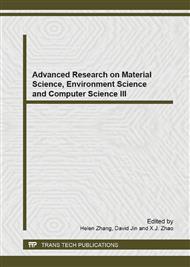p.28
p.32
p.36
p.41
p.45
p.51
p.55
p.59
p.63
Numerical Simulation and Optimization of "Non-Catalytic Reduction" Process for Circulating Fluidized Bed Boiler Based on Properties of Materials
Abstract:
The selective non-catalytic reduction (SNCR) process of a 480th-1 CFB boiler was simulated with the Reynolds Stress Model (RSM) model. The effects of injection position, normalized stoichiometric ratio (NSR) and reaction temperature on the NOx removal process were studied with urea and ammonia as reducing agents. While three spray guns were set at the outside of the separator entrance and two spray guns at the up side, the system can reach the highest NOx removal efficiency. The NOx reduction efficiency of ammonia is about 20%-25% higher than that of urea, but the ammonia slip is also higher. The NOx reduction efficiency and ammonia slip both increases with the increase of NSR. Raising the inlet gas temperature of cyclone separator can significantly improve the NOx removal efficiency and reduce ammonia slip. At the temperature of 925 C, the ammonia slip of the two reducing agents are both less than 10μl/l. Simulation results are comparatively consistent with the experiment datas cited form authoritative journals.
Info:
Periodical:
Pages:
45-50
Citation:
Online since:
January 2014
Authors:
Price:
Сopyright:
© 2014 Trans Tech Publications Ltd. All Rights Reserved
Share:
Citation:


